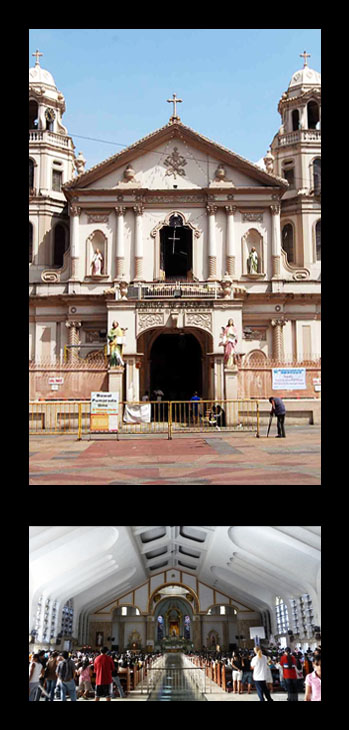
History
The Church of the Black Nazarene or more popularly known as Quiapo Church, has been a home to diverse city dwellers, may it be transient or permanent. Quiapo Church shelters a part of the rich history of Catholicism in the heart of Manila.
It was in 1787 when then Manila Archbishop Basilio Rufina ordered the transfer of the Black Nazarene to Quiapo Church.
In 1586, the church was under the supervision of Franciscans friars, honoring St. John the Baptist. In 1787, Manila Archbishop Basilio ordered the transfer of the Black Nazarene from the Augustinians in Intramuros to the church in Quiapo. The transfer or Translacion is celebrated every 9th of January, where the feast of the Black Nazarene also falls. Devotees believed that whoever touches the miraculous Nazarene will be healed of their diseases.
Architectural Design
The Quiapo Church was said to have original Mexican Baroque edifice, but had to be reconstructed and repainted after fire grazed it in 1929. Also, it was expanded from its original size in 1984 to accommodate the amassing numbers of devotees and church-goers especially on novena on Fridays and on its feast day. The early structure of Quiapo church had survived fires in 1791 and 1929, great earthquakes in 1645 and 1863, and the devastating Manila bombing in 1945 during the Second World War. The damages to the edifice caused by the fire in 1929 were later reconstructed under the expertise of architect Juan Nakpil. Photography enthusiasts never fail to include Quiapo church as one of the must-see old Manila churches.
At present, the church’s structural soundness and resistance to strong earthquakes is currently being assessed by experts to ensure the safety of church-goers.
How to get there
Quiapo church is just walking distance from LRT Carriedo Station. All jeepneys and buses with Quiapo signboard that passes along Quezon Boulevard will take you there. You can get off at Plaza Miranda.
